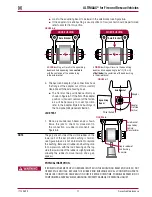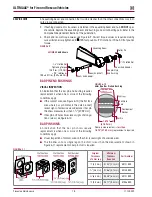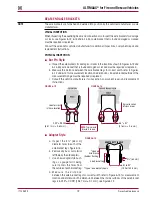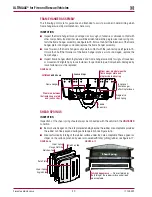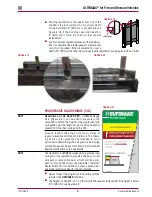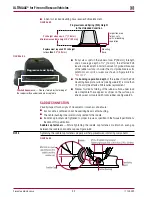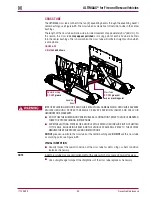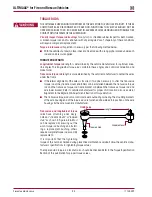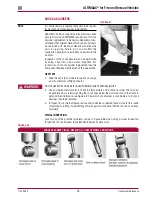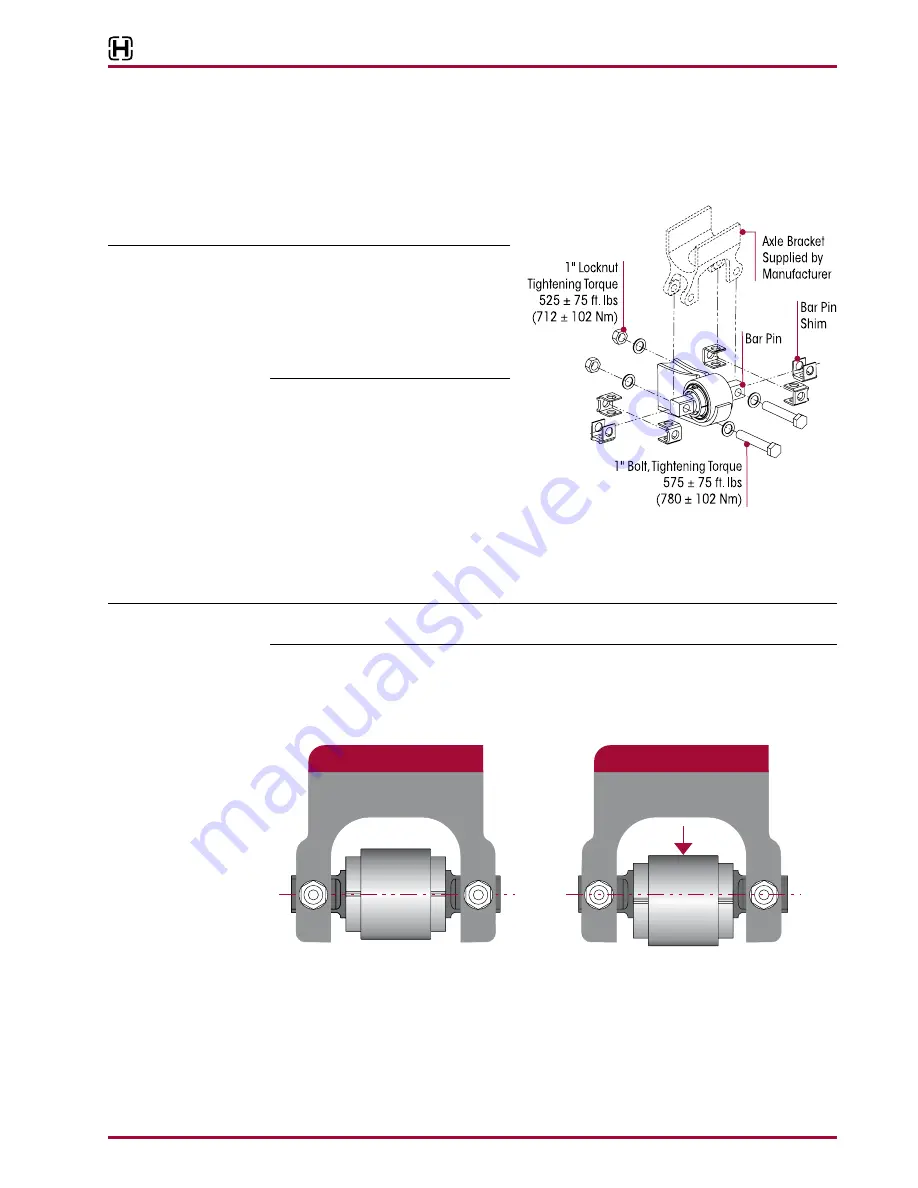
17730-299
15
Preventive Maintenance
ULTIMAAX
®
for Fire and Rescue Vehicles
EQUALIZING BEAM END CONNECTION
An inspection of the beam end connections are necessary
when a vehicle is in the shop for
major repair work
and at regular preventive maintenance intervals . Periodic visual inspection by
the driver and service personnel is also recommended .
FIGURE 6-2
■
Bar Pin Style,
see Figure 6-2
NOTE
The equalizing beam end connection
requires that the fasteners are tightened
to torque specifications, see Figure 6-2,
to maintain the clamp load of the axle
bracket legs to the bar pin . All bushing
motion is accommodated by rubber
deflection .
VISUAL INSPECTION
1 . Chock the wheels .
2 . Visually inspect suspension com-
ponents for signs of movement or
excessive wear .
■
Inspect alignment shims in
equalizing beam end for looseness . Lightly tap on the alignment shims to see if they
can be moved . If movement is detected, tighten fasteners to the proper torque value, see
Figure 6-2 .
■
Inspect the equalizing beam end connection for signs of excessive wear or looseness .
SERVICE HINT
An equalizing beam end connection that is visibly cleaner than the other connections may indi-
cate a loose connection .
■
Look for worn, frayed or distorted rubber in the bar pin beam end bushing, see Figure 6-3 .
■
Look for the equalizing beam to be lower in the beam hanger, see Figure 6-3 .
■
If the bar pin beam end bushing is visually offset a floor jack test should be performed,
refer to Jack Test in this section .
FIGURE 6-3
Axle Bracket
Axle Bracket
GOOD BUSHING
WORN BUSHING
C
L
C
L
A
bushing will result in the equalizing beam
GOOD
end hub appearing to be
with the
centered
centerline of the end bushing in the axle bracket
A
bushing will result in the equalizing beam
WORN
end hub appearing to be / " (15 mm)
5
8
offset/below
the centerline of the end bushing in the axle bracket

















